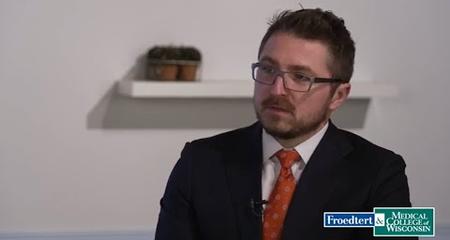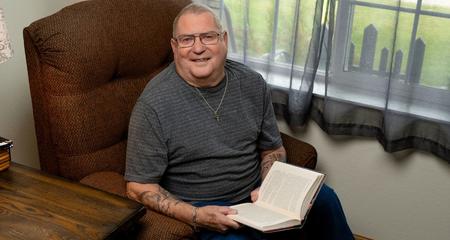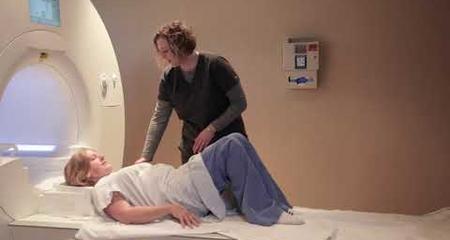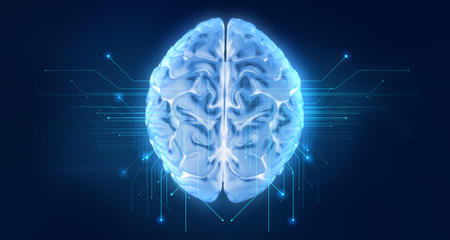Spinal Cord Stimulation (SCS) is used to treat chronic neuropathic (nerve) pain of the arms, legs or trunk. Pain travels from these areas along nerves, enters the spinal cord and then connects with the brain. SCS uses mild electrical pulses delivered to the spine to interfere with pain signals affecting the brain. Stimulation does not eliminate the source of pain; it simply interferes with the signal to the brain. In many ways, SCS is very like that of a cardiac pacemaker but delivers its pulses to the spine instead of the heart.
Conditions Treated by Spinal Cord Stimulation
- Neuropathic pain following spine surgery
- Complex regional pain syndrome (CRPS)
- Neuropathic pain after joint replacement surgery
- Diabetic peripheral neuropathy
- Sciatica
- Neck/back pain (failed neck or back syndrome)
- Arachnoiditis
- Other nerve pain of the arms or legs (neuropathy)
How the SCS Procedure Works
 A spinal cord stimulator (SCS) is a device placed under your skin that sends mild electric pulses to your spinal cord/spinal nerves to block the feeling of pain. It can be used to help treat your pain and potentially decrease the amount of pain medication you need to take. When turned on, the stimulation feels like nothing to a mild tingling in the area where pain is felt.
A spinal cord stimulator (SCS) is a device placed under your skin that sends mild electric pulses to your spinal cord/spinal nerves to block the feeling of pain. It can be used to help treat your pain and potentially decrease the amount of pain medication you need to take. When turned on, the stimulation feels like nothing to a mild tingling in the area where pain is felt.
A temporary trial, or test run, is performed prior to the decision of receiving a more permanent, fully-implanted device for long-term pain relief. The system is adjustable, reversible and rechargeable.
The goal for spinal cord stimulation is at least 50% pain relief as well as increased ability to be active.
A SCS system consists of:
- A small battery placed under the skin
- A wire that delivers electrical pulses
- An external device used to control it
Who Should Get SCS
SCS may be an option if:
- Conservative treatment options (medications, physical therapy, procedures, etc.) have not worked for you.
- You are not a candidate for or do not wish to have further surgery.
- Your pain is not due to an easily correctable problem.
- You do not have significant medical or psychological conditions that would make the SCS implantation procedure unsafe.
SCS Eligibility
Here is the process to determine if you are a candidate for SCS and implantation.
- Step 1. A pain physician will evaluate your condition to determine whether your pain syndrome could be helped by SCS therapy.
- Step 2. You will undergo a psychological evaluation to understand how you are currently coping with your pain and to assess the timing and your readiness for SCS therapy. This is also a requirement of most insurance companies.
- Step 3. The pain physician implants a trial SCS lead to evaluate the effectiveness of SCS on pain reduction. The trial period is usually about seven days. During the trial period, the connecting cables exit the body and connect to the neurostimulator and a remote device. You have the ability to change programs and adjust. We ask that you not change your pain medicine regimen during the trial period.
- Step 4. If the trial provides significant pain relief, the next step is the long-lasting system implantation with a small internal battery. A neurosurgeon or pain management specialist performs this procedure.
Choosing Froedtert & MCW Spinal Stimulation
There are several attributes that set our program apart.
- Our spine stimulation program is a team of professionals including pain management physicians, neurosurgeon and psychologists who offer the appropriate treatment recommendations for SCS therapy.
- Each patient being considered for SCS therapy is discussed at our interdisciplinary SCS case conferences. This discussion allows the team members to collaborate in developing each individual treatment plan.
- Our physicians are fellowship trained with additional studies in neuromodulation (including SCS) and all aspects of pain medicine.
- As an academic medical center, the physician specialists have quick access to the latest scientific advancements and technology in SCS therapy.
- We perform more than 100 SCS procedures per year. This with the combined experience of each member of the SCS team has resulted in good outcomes and complication rates significantly lower than the national averages.
Treatment Team
Virtual Visits Are Available
Safe and convenient virtual visits by video let you get the care you need via a mobile device, tablet or computer wherever you are. We'll assess your condition and develop a treatment plan right away. To schedule a virtual visit, call 414-777-7700.
BLOGS, PATIENT STORIES, VIDEOS AND CLASSES













